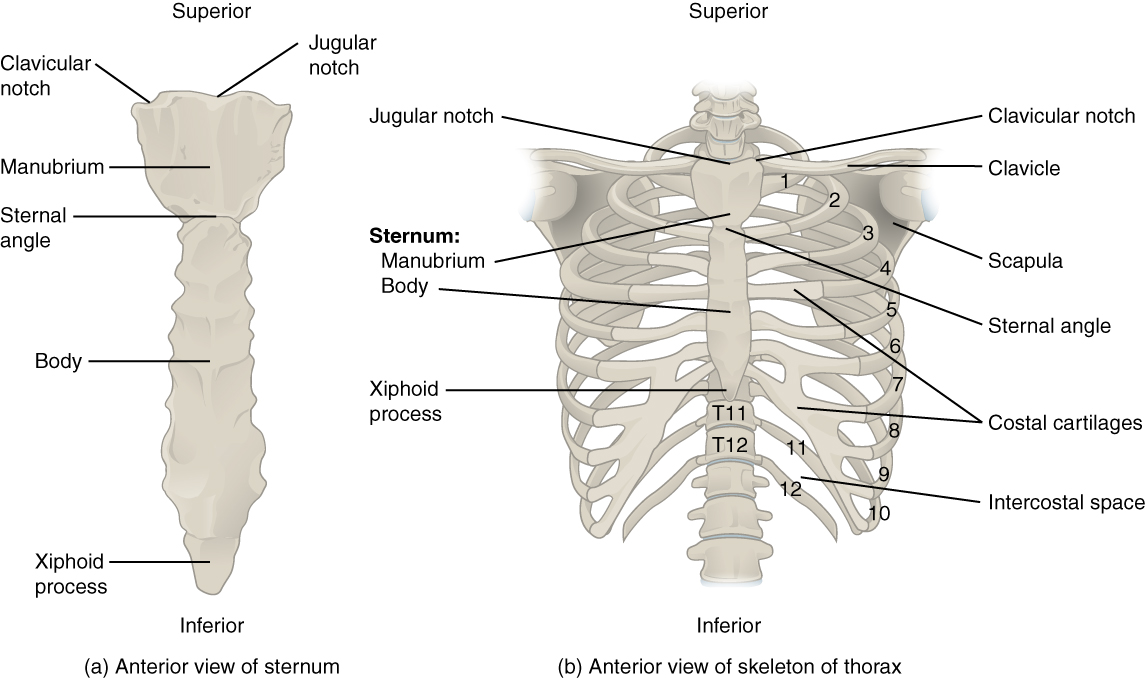| << Chapter < Page | Chapter >> Page > |
The thoracic cage (rib cage) forms the thorax (chest) portion of the body. It consists of the 12 pairs of ribs with their cartilages and the sternum ( [link] ). The ribs are anchored to the 12 thoracic vertebrae. The thoracic cage protects the heart and lungs.

The sternum is the elongated bony structure that anchors the anterior thoracic cage. It consists of three parts: the manubrium, body, and xiphoid process. The manubrium is the wider, superior portion of the sternum. The elongated, central portion of the sternum is the body . The inferior tip of the sternum is the xiphoid process . This small structure is cartilaginous early in life, but gradually becomes ossified starting during middle age.
Each rib is a curved, flattened bone that contributes to the wall of the thorax. The ribs articulate posteriorly with the T1–T12 thoracic vertebrae, and most attach anteriorly via their costal cartilages to the sternum. There are 12 pairs of ribs. The ribs are numbered 1–12 in accordance with the thoracic vertebrae.
The bony ribs do not extend anteriorly completely around to the sternum. Instead, each rib ends in a costal cartilage . These cartilages are made of hyaline cartilage and can extend for several inches. Most ribs are then attached, either directly or indirectly, to the sternum via their costal cartilage (see [link] ). The ribs are classified into three groups based on their relationship to the sternum.
Ribs 1–7 are classified as true ribs . The costal cartilage from each of these ribs attaches directly to the sternum. Ribs 8–12 are called false ribs . The costal cartilages from these ribs do not attach directly to the sternum. For ribs 8–10, the costal cartilages are attached to the cartilage of the next higher rib. Thus, the cartilage of rib 10 attaches to the cartilage of rib 9, rib 9 then attaches to rib 8, and rib 8 is attached to rib 7. The last two false ribs (11–12) are also called floating ribs . These are short ribs that do not attach to the sternum at all.
The thoracic cage protects the heart and lungs. It is composed of 12 pairs of ribs with their costal cartilages and the sternum. The ribs are anchored posteriorly to the 12 thoracic vertebrae. The sternum consists of the manubrium, body, and xiphoid process. The manubrium and body are joined at the sternal angle, which is also the site for attachment of the second ribs.

Notification Switch
Would you like to follow the 'Skeletal system' conversation and receive update notifications?